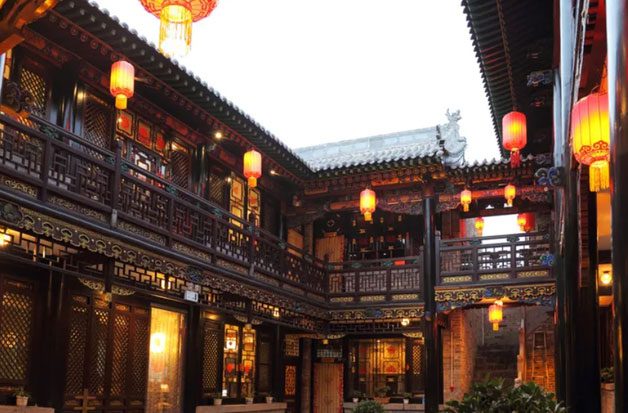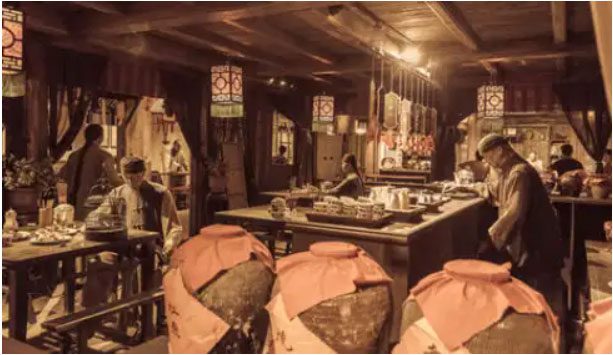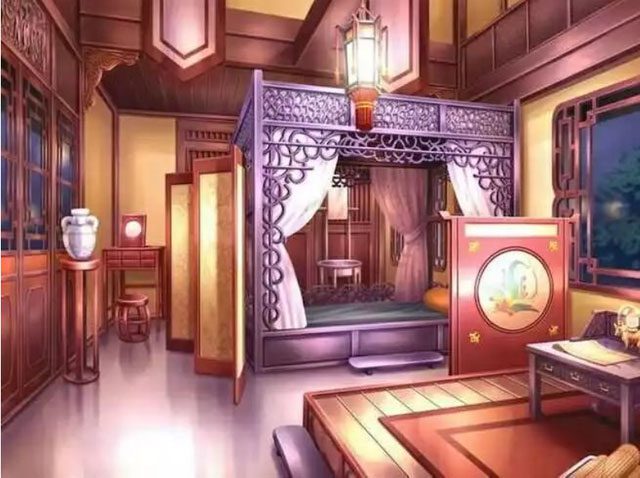Chinese historians assert that if you still believe that ancient people only needed to hold some silver to rent a room at an inn, you have been misled by movies.
In the memories of fans of Chinese martial arts films, we often see scenes where a person enters an inn, places two pieces of silver on the table, and says: “Innkeeper, give me a room to rest.” Immediately, the innkeeper will shout: “Yes, coming right up, welcome esteemed guest!” This imagery has led us to believe that ancient people could rent a room at any inn simply by having money in hand. However, Chinese historians refute this notion, asserting that such a scene could not have occurred. Why do they make such a claim?
Inns Were Regulated by the Imperial Court

The first inns were established during the Zhou Dynasty. (Photo: Sohu).
Historical records indicate that the earliest inns were built during the Zhou Dynasty. At that time, inns were referred to by different names. The Zhou king mandated that on roads every ten miles, a “lu”—a small room for resting—should be constructed. Every thirty miles, there should be a “road room” to provide shelter from the sun and rain. And every fifty miles, there should be a “waiting hall”, which is essentially an inn.
Inns during the Zhou Dynasty were managed by the imperial court. Furthermore, the court stipulated that only officials could use inns; commoners had no connection to this matter.

During the Tang and Song Dynasties, private inns were approved by the court. (Photo: Sohu).
Later, during the Tang and Song Dynasties, the country’s economy flourished, and at this time, private inns were sanctioned by the court. Additionally, during this period, the court organized numerous examinations, which required scholars to travel from their hometowns to the capital, making the construction of roadside inns for their rest essential.
However, common people wishing to rent a room at an inn needed to complete a lengthy process involving 7749 steps. What were those procedures?
3 Steps Needed to Rent a Room in an Inn
In ancient feudal times, although there was no modern technology, emperors had various ways to manage the populace. Without such measures, it would be difficult to ensure order and security in the country. Consequently, during this era, people’s movements were strictly monitored. The court even established a system to regulate the movement of citizens. They needed to complete three tasks below before they could rent a room in an inn.

Citizens wishing to rent a room must have an “identity card”. (Photo: Sohu).
First, citizens must possess an “identity card.” Specifically, this is a type of document that proves a person’s identity. Similar to our current identification cards, this document contains information such as name, place of origin, date of birth, and residence. Anyone going out had to carry this “identity card” with them.
Second, citizens must have a “recommendation letter” from the county office. When individuals needed to travel, they had to visit the county office to request a “recommendation letter.” This letter had to be carried at all times and presented before renting a room in the inn. The “recommendation letter” would detail the individual’s name, personal information, and their intended destination.

Guest information would be recorded in a “registry”. (Photo: Sohu)
Third, citizens needed to fill out information in a “registry.” This “registry” was managed by the inn. The innkeeper was required to maintain a book to update the information of guests renting rooms. The information recorded included the guest’s name, place of origin, occupation, and hometown. At the end of each month, the innkeeper would submit this “registry” to the imperial court.
Inns of the Past Were Different from Movies
In films, we often see that rooms in inns are fully equipped with all necessary items for guests to use. Many people even stay in the room for several days without needing to go outside. However, inns in ancient times were quite different from those portrayed in films.

Rooms in inns were furnished according to the amount of money the guest had. (Photo: Sohu)
After completing the three aforementioned procedures, guests could check into their rooms. The furnishing of rooms varied depending on the amount of money the guest had.
For example, during the Song Dynasty, the highest-class room was called “chief room.” This room not only had the largest area, but it was also decorated with the most expensive and complete furnishings. Guests in this room also enjoyed accompanying services such as free wake-up calls and warm water for use. It can be said that the “chief room” was designed to make guests feel at home.
For lower price points, guests could choose corresponding room categories.


















































